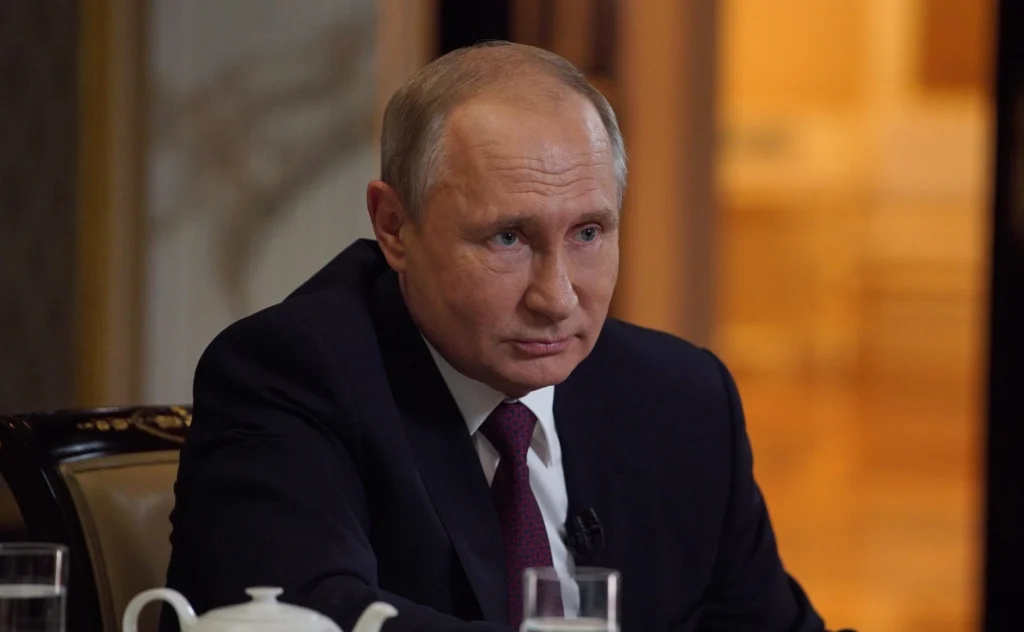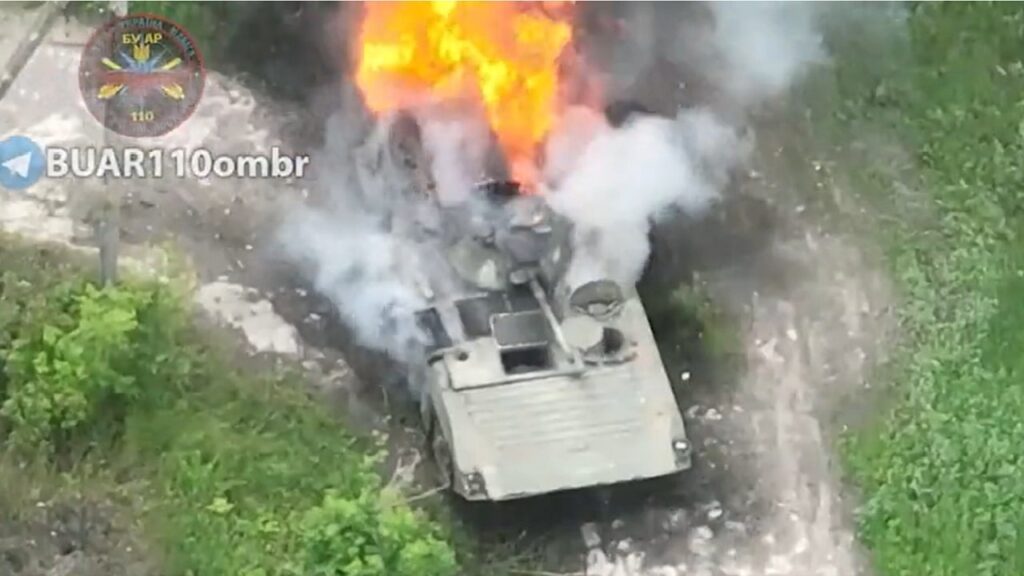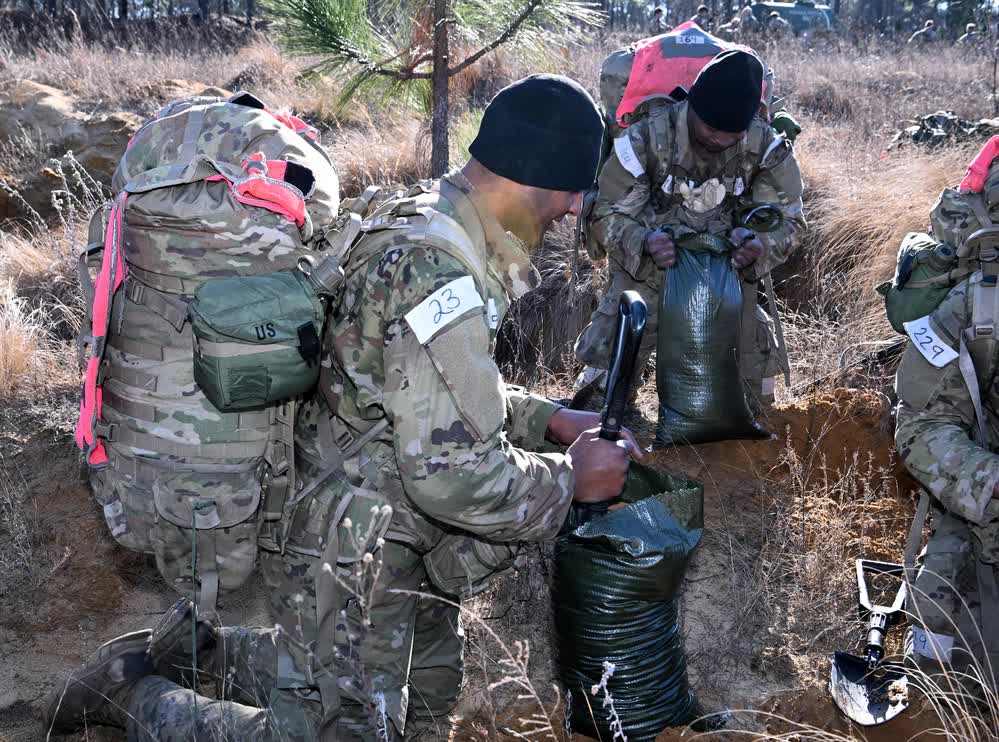It has been 208 days since the Russian invasion began. On Monday, the Ukrainian military continues to press the Russian forces in the east, liberating more territory.
A strategic defeat in the Donbas
In a development of great importance, on Monday, the Ukrainian military liberated several small settlements in the Luhansk province. The Ukrainian advances mean that the Russian military no longer controls the entirety of Luhansk, which it had controlled since the capture of Severodonetsk and Lysychansk at the end of the summer.
Full control of the Donbas, which is comprised of the Donetsk and Luhansk provinces (also known as “oblasts”), has been one of the two main objectives of the Kremlin since May, when it had to re-evaluate its strategic goals in Ukraine after its humiliating defeat in Kyiv. The loss of parts of Luhansk province will make the Kremlin’s position that much harder with the Russian military blogger community and, to an extent, with the Russian population. In a sea of failures, the capture of Luhansk had been a lone success for Russia.
Related: The M982 Excalibur 155mm artillery shell is a win for Kyiv

Russian casualties
Every day, the Ukrainian military is providing an update on their claimed Russian casualties. These numbers are official figures and haven’t been separately verified.
However, Western intelligence assessments and independent reporting corroborate, to a certain extent, the Ukrainian casualty claims. For example, the Oryx open-source intelligence research page has visually verified the destruction or capture of more than 1,100 Russian tanks (which amounts to more tanks than the combined armor capabilities of France, Germany, Italy, and the United Kingdom) and more than 5,300 military vehicles of all types; this assessment has been confirmed by the British Ministry of Defense.
The same independent verification exists for most of the other Ukrainian claims. Recently, the Pentagon acknowledged that the Russian military has lost thousands of combat vehicles of all types, including over 1,000 tanks, and dozens of fighter jets and helicopters.
Furthermore, more recent reports that are citing Western intelligence officials indicate that the Russian military has suffered up to 20,000 fatalities in the war so far. Sir Tony Radakin, the British Chief of the Defence Staff, recently told the BBC that the West understands that more than 50,000 Russian troops have been killed or wounded in the conflict thus far. If we were to take the Ukrainian figures as accurate, the number mentioned by Sir Radakin is on the low side of the spectrum.
Yet, it is very hard to verify the actual numbers unless one is on the ground. However, after adjusting for the fog of war and other factors, the Western official numbers are fairly close to the Ukrainian claims.
Related: Putin’s Playbook: The author of Putin’s failing foreign policy

As of Monday, the Ukrainian Ministry of Defense is claiming the following Russian casualties:
- 54,650 Russian troops killed (approximately three times that number wounded and captured)
- 4,720 armored personnel carriers and infantry fighting vehicles destroyed
- 3,581 vehicles and fuel tanks
- 2,212 tanks
- 1,313 artillery pieces
- 920 tactical unmanned aerial systems
- 251 fighter, attack, and transport jets
- 312 Multiple Launch Rocket Systems (MLRS)
- 217 attack and transport helicopters
- 238 cruise missiles shot down by the Ukrainian air defenses
- 168 anti-aircraft batteries
- 125 special equipment platforms, such as bridging equipment
- 15 boats and cutters
- four mobile Iskander ballistic missile systems
For most of May, the Russian military suffered the greatest casualties around the Slovyansk, Kryvyi Rih, and Zaporizhzhia areas, reflecting the heavy fighting that was going on there. As the days and weeks went on, most of the heavy fighting shifted toward the direction of Bakhmut, southeast of Slovyansk, around Severodonetsk, Lyman, and Lysychansk.
Then the location of the heaviest casualties shifted again westwards toward the area of Kherson and Zaporizhzhia — where one of Europe’s largest nuclear plants is located — as a result of a Ukrainian counteroffensive in and around the area.
Then, the concentration of casualties once more shifted back to the Donbas, especially in and around Severodonetsk and Lysychansk, the two urban centers the Russians managed to capture in July. For most of August, the heaviest fighting took place in the Donbas, where the Russian forces unsuccessfully tried to breach the Ukrainian defenses and capture the Donetsk province. But lately, most of the fighting has shifted to the south where the Ukrainian military is mounting a major counteroffensive to recapture Kherson. It is now there, on the southern front, that the Russian military is suffering the heaviest casualties.
On Monday, Ukrainian forces continued to inflict the heaviest casualties in the direction of Donetsk City and Bakhmut.
The stated goal of the Russian military for the renewed offensive in the east is to establish full control over the pro-Russian breakaway territories of Donetsk and Luhansk and create and maintain a land corridor between these territories and the occupied Crimea.
Feature Image: Russian President Putin (Russian Presidency)


